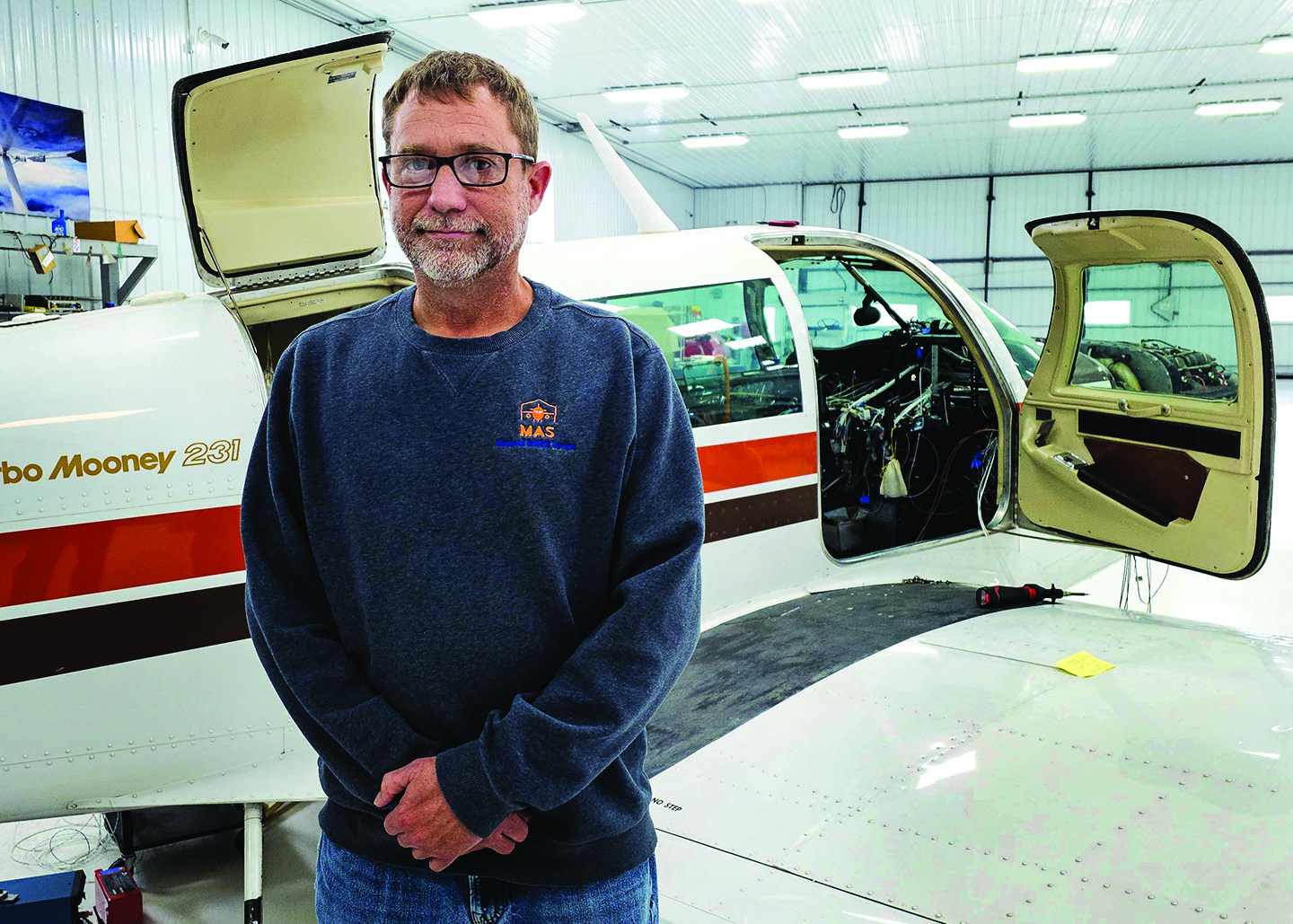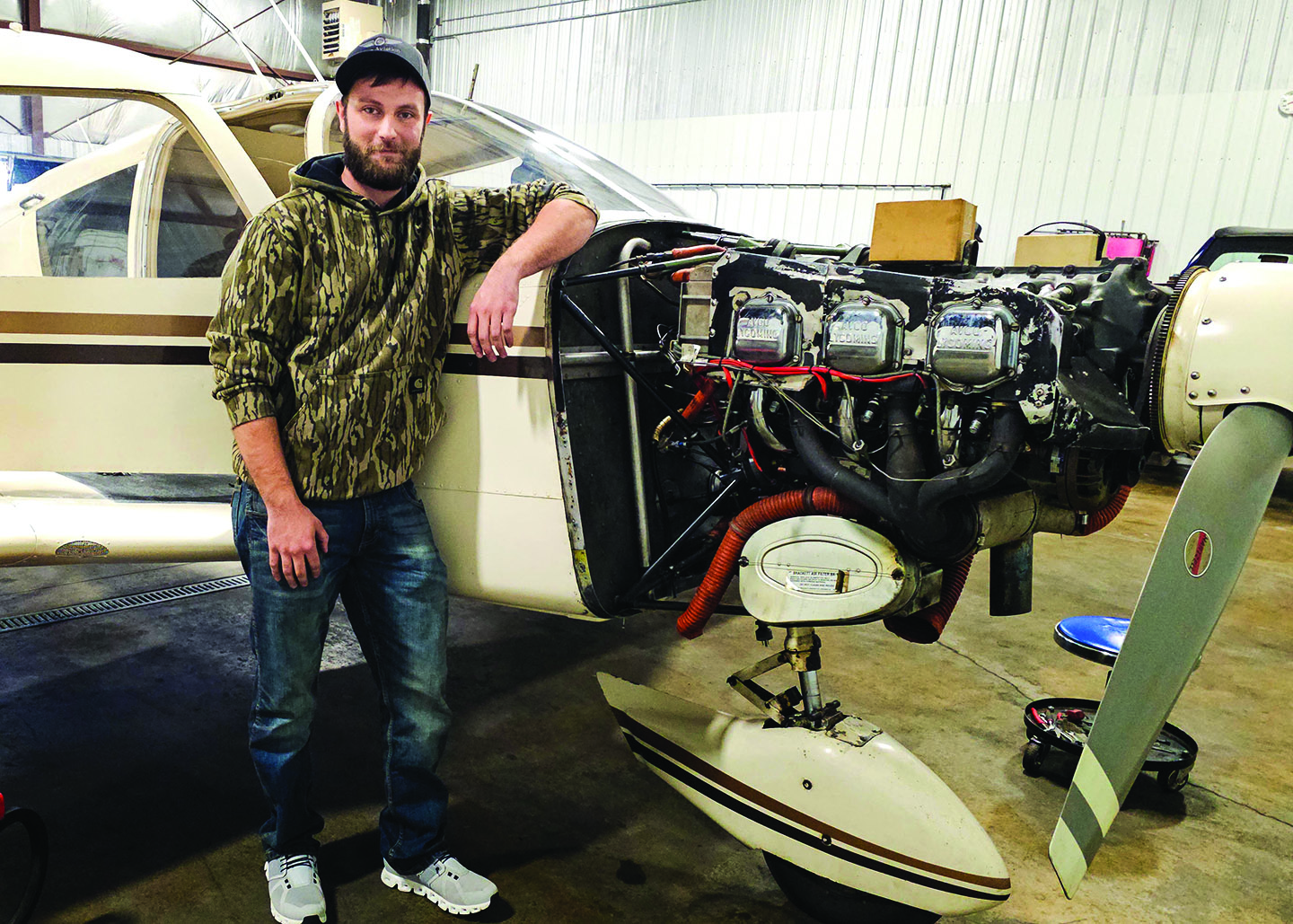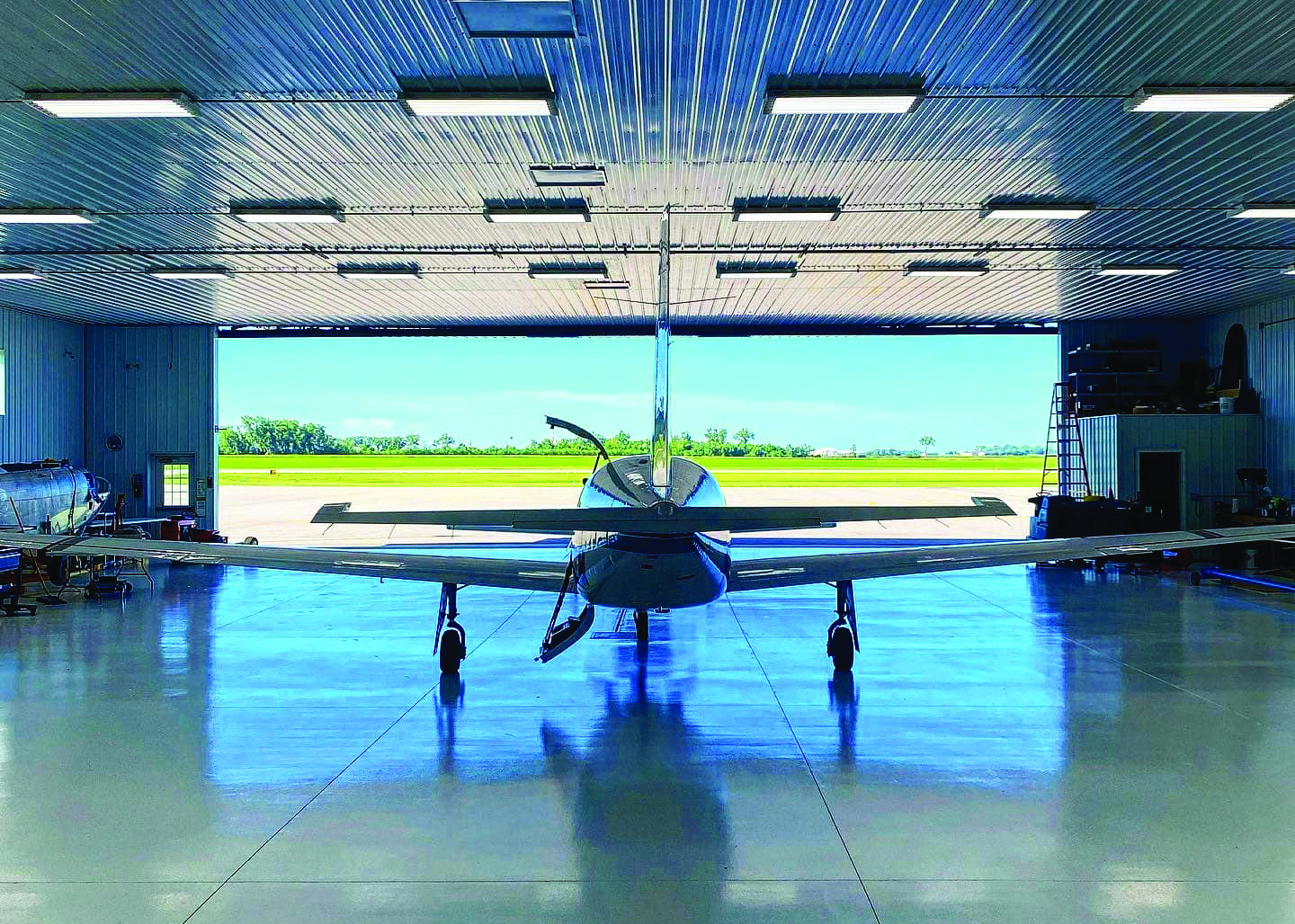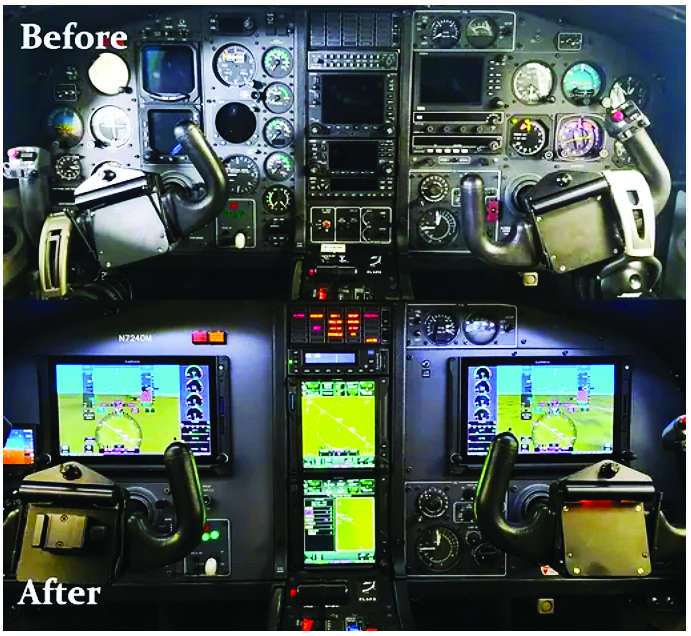
Ryan Paulson’s Moorhead Aviation Services provides avionics installations, updating older planes with the latest technology. (Photos/Nancy Hanson.)

Matt Overholt and Jake Lamm (not shown) manage Moorhead Municipal Airport. Their company, King Aviation Services, repairs airplanes and performs mandatory annual and 100-hour inspections.

Hangars at Moorhead Municipal Airport are at or near capacity with privately owned airplanes. (Photo/Moorhead Aviation Service)

Moorhead Aviation Services replaces the outdated instrument panels of planes from the 1970s and 1980s with state-of-the-art technology.
Nancy Edmonds Hanson
You’ve probably driven past Moorhead Municipal Airport countless times without giving it a second glance. On the ground, that is. For the lucky fraction who pilot their own crafts high overhead, it’s a local landmark … and a big advantage.
The acreage five miles east of the city – at the intersection of Interstate 94 and Highway 336 – had been quietly growing crops until city officials broke ground for a brand-new airfield on May 25, 1995. Nearly 30 years later, it buzzes with the takeoffs and landings of private aircraft – just a short hop from Fargo-Moorhead, and far less crowded than the older, much larger and far busier skies over Hector International Airport in north Fargo.
Some 60 airplanes occupy the growing rows of hangars along Florence Klingensmith Field, subtitled three years ago in honor of the pioneer Moorhead aviator who became North Dakota’s first licensed female pilot in 1929. Ten privately owned hangars and 34 public T-hangars line its roadways. Aviation gas is available, along with maintenance services and one of the region’s rare avionics shops. There’s a comfortable passenger lounge, and a city-owned courtesy car is available to ferry fliers into the metro area for business or pleasure.
“This airport is really poised for growth,” Ryan Paulson suggests. Paulson owns Moorhead Aviation Services, one of two companies that not only operate there but manage the airfield. “Fargo (Hector Airport) is getting very, very busy.” He cites the rising traffic: a growing number of commercial flights coming and going, as well as FedEx and UPS, the Fargo Jet Center, more than 200 aircraft based on the grounds, and the Predator drone test program operated by the North Dakota Air National Guard.
Matt Overholt, who owns nearby King Aviation Services with partner Jake Lamm, agrees that Moorhead’s airport has sometimes been overlooked. “For a long time, I didn’t know it was here myself,” the Fargo native admits. “I’d just drive by on my way to the lakes.
“But it’s gotten way better in the last few years,” he adds. He cites demand for the city-owned hangar spaces his company manages: All are occupied, and there’s a waiting list. “We’re a good satellite airport, right next to Fargo. A lot of pilots don’t like flying into such busy airspace. We fit quite a few people’s needs.”
The two airport businesses complement each other’s services. King Aviation Services focused on mechanical maintenance, including the all-important annual or 100-hour inspections required by the Federal Aviation Administration. As managers of the airport, Overholt and Lamm also handle rentals of the city-owned T-hangars, as well as grounds maintenance, from mowing in summer to keeping the 4,100-foot runway clear of snow and ice throughout the winter.
Moorhead Aviation’s specialty is avionics, the electronic equipment that guides pilots from take-off through landing. Paulson and his staff specialize in replacing the outdated analog equipment on instrument panels with advanced digital technology that didn’t exist when many of the airplanes hangared there were manufactured in the 1970s and 1980s.
Avionics technicians upgrade the old “six-pack,” he explains – the analog equipment that was originally installed when they were built. That includes airspeed, altitude, vertical speed and heading indicators, as well as the altimeter and turn coordinator. The panel full of dials is replaced with a full array of touchscreens. Autopilot can also be added to take over some of the pilot’s tasks.
“You can get close to technology that’s just about as good as what the airlines have,” Paulson asserts. “The only thing that’s not quite there yet is auto-throttle and auto-landing … but that’s coming, too.”
Paulson’s company ranks among the top of third of Garmin electronics dealers, often in the top 10 worldwide. “Not many shops in the region do what we do,” he notes. “We have customers flying in from as far away as Texas, the Twin Cities and Kansas City.” His firm works on everything from single-engine piston models through light jets.
“The majority of the fleet was built back during the heyday of aviation,” he explains. That was 50 years ago, he says, “when the Space Race and the Apollo missions really captured everyone’s imagination.” He adds, “That’s not true anymore. Today flying is pretty much viewed as a rich man’s hobby.
“And that’s just wrong,” he emphasizes. “You can get one heck of a good plane for the price of a brand-new, full-size pickup or a wake-boarding boat, and the cost of use is about the same.”
Just think, he suggests: Instead of the tiresome three- or four-hour drive to Minneapolis, five to Duluth or six to the North Dakota oil fields, you could fly your airplane and be there in a couple hours.
“When you fly instead of drive, you can do so much more in a day. Your flight is a pleasure, and you won’t end up dead tired when you get there. Instead, with the automation we install, you can just sit back and watch.”


